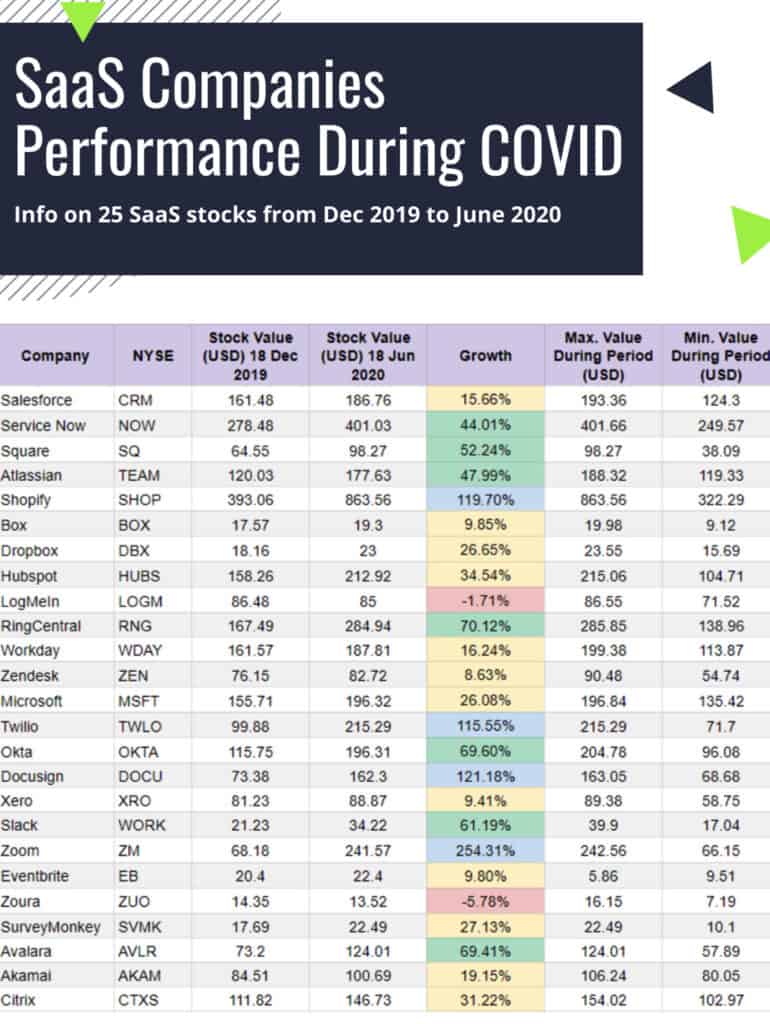Historically, the software industry has been relatively resistant to crises. It is expected to withstand the COVID-19 pandemic better than most other industries.
The pandemic is accelerating the adoption of software in certain market segments, for example, the increased demand for virtual collaboration tools and the growth of e-commerce since the beginning of mobility restrictions.
“The software industry is likely to be among the first to recover from the COVID-19 crisis.”

In this article by PwC in England, experts discussed the need for leaders of software companies to consider the risks and opportunities that COVID-19 presents, and will continue to present, and how to navigate and deal with them for years to come.
We can somehow apply the same concept in Brazil, since the software market is increasingly open and globalized, allowing any employee of a company to buy software with a credit card or any other means of payment. Therefore, the software governance be it on premises or cloud it becomes increasingly important for any size of organization.
The majority of software market spending is derived from medium and large companies that are generally better placed to weather an economic downturn than small businesses.
Pre-COVID-19 forecasts were for the global software market to grow between 6% and 9% in 2020. Revised forecasts point to growth in the range of 0% to -7%. While this is a considerable deterioration, it would still represent a relatively strong performance in an economic downturn. This range nonetheless reflects a high degree of uncertainty in future demand due to the nature of the COVID-19 pandemic.
Why is the software industry so resilient?
There are a number of factors that support resilience in the software industry, particularly the corporate ones.
The majority of market spending is derived from medium and large companies that are generally better placed to weather an economic downturn than small businesses.
Many applications provided by the enterprise software industry are critical to business operations and therefore are less likely to be targeted on cost-cutting measures.
Software vendor revenue models often have a significant upfront component and are often very cash-generating, which provides liquidity. Software licensing can typically include a recurring payment or it can be fully recurring, providing more confidence in future revenue.
In addition, the important fourth quarter calendar for signing agreements and contracts has not yet coincided with the impact of COVID-19.
These industry characteristics mean that financial analysts expect relatively stronger performance for the software industry in the next two years.
Increased penetration, or adoption, is a key driver of software spend growth, providing a degree of decoupling from macroeconomic drivers, and COVID-19 is accelerating adoption in certain market segments.
Software companies' operations were also able to more easily adjust to lockout settings due to limited reliance on physical supply chains and given that employees are already used to working remotely.
As with any other industry, however, some companies will naturally be tougher than others.
Vendors with greater reliance on one-off license sales (and a smaller component of recurring revenue), or apps that are exposed to verticals such as Tourism, Hospitality, bars and restaurants, may fare worse during this crisis.
Also, at the earlier stage, companies with high growth and cash can face liquidity challenges. Uncertain growth prospects cast valuations into question, hampering their ability to raise new investments. Depending on the duration of the pandemic, this could impact fewer startups that successfully scale in the coming years.
What are we learning?
Despite the inherent resilience of the software market, COVID-19 will inevitably create both short-term and long-term challenges. Understanding the risks and recognizing the opportunities will be critical to future success.
New expenses can be postponed
The software industry provides products and services to companies in a variety of industries, many of which have been severely affected by the consequences of the pandemic.
We will likely witness new business delays as buyers choose – or are forced – to defer spending due to financial constraints or more pressing priorities. This will reduce the volume of new logos, upgrades, cross-sell and up-sell offers in the short term.
Revenue churn will increase as a result of business failures, particularly in the small business segment. Seat/user numbers in volume-linked licensing offerings can also decline as customers downsize or seek to cut non-business-critical costs.
On the other hand, suppliers with legacy contracts may see a useful reduction in churn as upgrade or modernization programs are suspended or cancelled.
Customers can delay payments and be more price sensitive
In the coming quarters, software providers are likely to see greater price sensitivity, particularly on renewals, from customers who were particularly affected by COVID-19.
They may also have to be more tolerant of increased days of default due to customers and partners delaying payments.
There will be less demand for new services
Likewise, we are likely to see a drop in the use of professional services and consultancies as a result of reduced new business or project suspension.
However, delays in new implementations often lead to an increase in expenses in the maintenance of the solutions. softwareand existing.
Field sales will be challenging
Field sales activity, especially important for driving new logos, was significantly impacted by mobility blocking measures.
There are a number of immediate actions software leaders must take to optimize performance and preserve shareholder value during this crisis.
How will we apply our learnings?
There are a number of immediate actions software leaders must take to optimize performance and preserve shareholder value through this crisis.
Quickly review and review market objectives
Companies must conduct a detailed review of the sales pipeline and ensure they are focused on key opportunities and customer segments.
They must also ensure that the best sales resources are allocated to the highest priority opportunities and can invest the remaining time to execute sales and partner training.
In today's environment, marketing campaigns must respond to Covid-19 issues and it is essential that messages are tailored to the specific vertical.
Companies should also revisit any existing forecasts, sales quotas and incentives to reflect the current market environment and to sustain productivity.
It may be necessary to change the marketing mix to support new areas and compensate for any channels that may have been compromised, such as field sales events or meetings.
Flexing channel incentives – for example, using accelerators – can also be a way to support new business and upselling to existing customers.
Vendors should also consider offering more PoC, Trials, business incentives and implementation support as a way to drive new business and avoid price drops that can be challenging to reverse.
Actively positioning subscription pricing as an alternative to upfront contracts to spread costs over time can help close deals and also improve the recurring revenue mix.
If so, license verification (Software Audit) can be an effective lever to increase short-term revenue and contracts that are close to renewal should be reviewed and optimized whenever possible.
Ensuring that the right sales and marketing performance indicators are in place is particularly important during periods of uncertainty and significant change.
Reporting frequency should be increased to help inform important decisions as early as possible.
Keep professional services and consulting teams active
During this turbulent period, companies need to put extra focus on implementations to minimize program problems or delays.
Customer success teams should be particularly focused on key customers who are in the early stages of adoption.
A relatively quick recovery is expected and current trends are likely to accelerate
Software is likely to be among the first industries to recover from the COVID-19 crisis. Certain segments will even benefit from the accelerated adoption of digital solutions by companies to enable flexible working, social distance and automation. We also expect the transition from on-premises datacenter to cloud workloads to accelerate as organizations look to reduce fixed costs and IT capital expenditures in the future.
However, corporate executives software they must consider the risks and opportunities that COVID-19 presents, and will continue to present, how to address new use cases or verticals, and how to navigate and address these in the coming years.
Authors of article: Barry Jaber ([email protected]); Andy Wisnia ([email protected]); Jass Sarai ([email protected]).
Tag: PWC, machine language, computer programs, application software, software meaning, programming software, programming languages, operating systems, task specific, database, enabling tools, industrial automation, project management, online language, programming language, text editor, latest news, what are the types, perpetual acquisition, types of licensing, information security, unlicensed software, license to use, proprietary software, cloud backup, original software, commercial software, program license, validity of licenses, cloud computing, licensed software, mozilla public license, free materials, IT outsourcing, dedicated server, software use, software license, user license agreement eula, fair use, software concepts, bsd license, talk to an expert, mit license, license be, need to buy, asset management, use licensing, understand how it works, based license, software license, licenses are defined, licensing models, digital transformation, gnu gpl, general protection law, acquisition license, information technology, free software, public domain, software licenses, open source software, public license, Code software, data protection, main models, pirated software, pirated program, software categories, developer companies, unlicensed software, personal data, user license agrément, perpetual acquisition licenses, proprietary intellectual age, access to source code, temporary use, pirated software, software license understand, snow software, Cloudhealth, Cloud Center of Execellence
